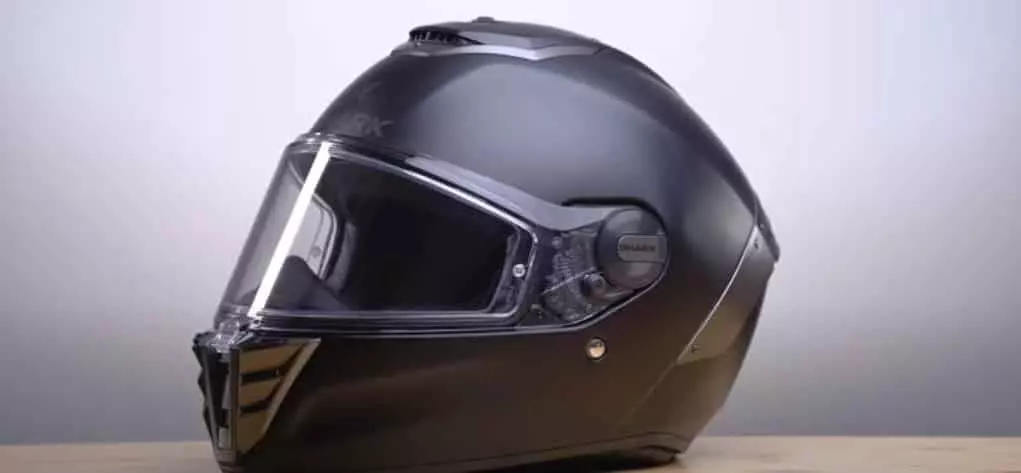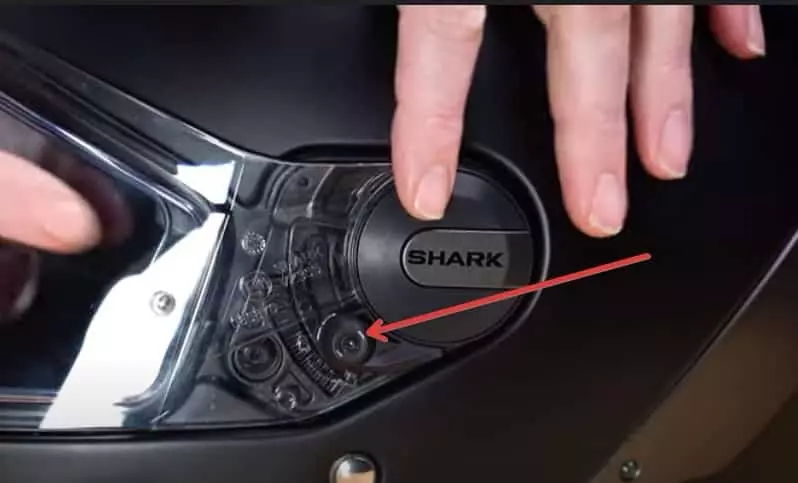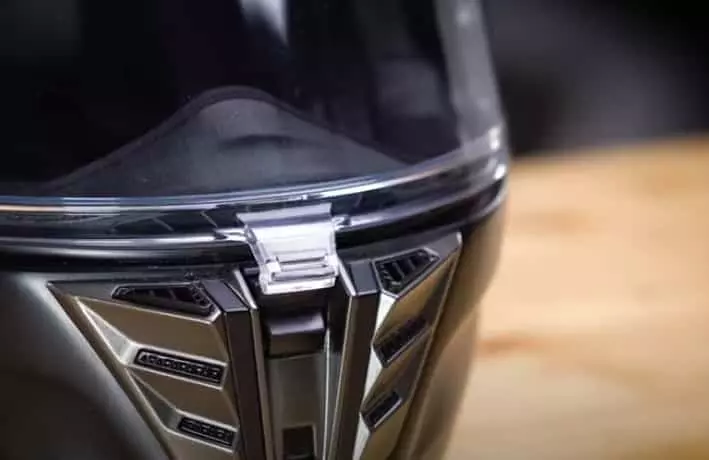The number of helmets being released that meet the new ECE 2206 safety standard is growing, and this is the first of those from Shark.
It’s the latest model in their Spartan series, and it takes its styling cues from muscle cars and muscle bikes with quite aggressive looks, especially around the chin vent.

Shark Spartan RS, Is It Worth All The Hype?
Table of Contents
At the end of the name, the RS initials can stand for all sorts of things, but the intention is the german interpretation of road sport. The Spartan RS is a sport touring helmet in its function but with more dramatic looks than I’d normally expect from a helmet like that.
Shell Construction
It has a fiberglass shell; it’s got Shark’s impressive main visor and an internal sun visor. It’s set up ready for Shark’s Bluetooth intercom, has a comfortable liner, and fastens with D-rings. Well, it does here in the UK.
Weight
Helmets with fiberglass shells don’t tend to be particularly light, and this one follows that trend. However, it weighs in on our scales at 1542 grams, which is pretty average for a helmet like this.
Ventilation
Ventilation comes through the dramatic-looking chin vent and then a similarly styled scoop on top of the helmet.
Slide the switch down on the chin vent, and it opens a route for air to get through the top of the chin bar and come out to give the visor some airflow.
Sliding the top ventilation switch back uncovers two holes that let air get down to the top of your head, and then there are channels through the eps that lead warm air to the exhaust fence at the rear.
Visor
The visor has been one of the better features of Shark’s premium helmets for a while, and this lid uses a system introduced on the Spartan GT back in 2020.
It has two securing points on each side to give it a firm attachment, and the change is simple.

There’s a graduated set of grooves on the left side that give the visor some resistance as it slides up and down, and you can adjust that tension by tightening or loosening the small Allen screw in the tab located on the side of the visor.
As you lower the visor, you feel it clicking over those grooves, and then the central tab comes down to the rest on the chin bar, which leaves a small gap around the base of the visor.
You give it a firm press to lock it down, activating the locking switch.

To raise the visor again, you need to press the switch and lift the visor. This takes a little getting used to, and I found the best way is to use my index finger to push the switch and lift that in one motion.
The visor’s a variable thickness across its surface with a very reassuring feeling. It’s got great peripheral vision and also optical quality.
You may want a deeper eye-port on a sports bike to see further forward when your head’s angled down, but this helmet isn’t designed for sports bike riders, so that’s not a particular criticism.
Pin Lock
This helmet is protected against mist pin lock max vision insert so the outer edges won’t interfere with your vision, and it’s a 120 grade which is the highest in terms of its missed defense.
Sun Visor
The sun visor behind it operates on a switch on the top of the shell-like the main visor is lowered in graduated steps. There are 42 of them, so you can fine-tune how far you want the visor to sit down.
At its lowest, it covers about as much of the inside of the lid. It’s possible to do with that middle piece extending beneath the breath guard.
Now, something I always notice with Sharks is that their sun visors are never anti-mist coated.
I’m guessing that’s because they’re more concerned with optical clarity, and they think that an anti-fog coating will reduce the optical clarity.
Whether that’s an issue for you depends on how you ride. If like me, you commute by bike and you tend to ride quite a lot when it’s misty in the mornings and the evenings, then an anti-fog sun visor is probably more important.
But if you’re someone who only really goes out in ideal conditions, maybe that’s unimportant. Maybe you’d prefer the optical clarity of having one without the anti-fog coating.
Interior
The liner of this helmet is very plush, with a brushed material covering the cheek pads and the top of the head.
And then, the area around the forehead and at the back of the head is a smoother material than the rest of the liner.
There’s synthetic leather used around the base of the neck rail and then in the trim around the eye-port.
This liner is a step up on the one used in the Spartan GT, especially as it’s more securely attached to the helmet.
In addition, it’s all removable, and there are recesses behind the cheek pads for intercom speakers.
This lid is optimized for the official Shark tooth intercom. The battery for that sits in the cavity behind the neck roll. That means you can have a slimmer control unit attached to the outside of the lid.
If you want to fit a universal intercom, you have a better chance with a Cena unit as the speakers for the 20s EVO that I tried to fit into the recesses on this helmet.
When I tried fitting a Cardo backtalk bold, the control unit fitted easily, but the 40-millimeter speakers wouldn’t sit down properly in the recesses.
The fastening strap for this lid, as I said earlier, is done up with d-rings. That’s how the Spartan RS is configured in the UK in the owner’s manual.
However, it points out that some countries might be getting a different version with Shark’s precise lock micrometric buckle as the fastener.
Protection Standards
The Spartan RS is approved for the new EXE 2206 standard for use on the road. As I said earlier, the new standard demands stiffer tests; there are harder impacts, more impacts across a wider range of areas on the helmet, and some glancing blows rather than just direct hits.
This is the Shark’s first lid to meet that new standard, and there’s a reassurance that comes with that in terms of safety.
The ACU also approves it for racing and track use in the UK. Again, however, it feels more like the sort of lid that will appeal to someone likely to race at Santa Pod rather than someone competing at Brands Hatch.
Sizes
As for sizing, the Spartan RS comes in sizes from extra small up to double extra large. There are two shell sizes to cover those helmet sizes, so helmets up to and included in the size medium share the smaller shell. And then large extra large and double XL share the bigger shell.
The Spartan RS will launch with a price that starts at $399.99/£299.99 for plain colors and goes up to £369.99/£329.99 for two-tone designs.
That’s a pretty good price for a helmet like this, which has a real premium feel. It’s better than the price would suggest.
In Conclusion
The Shark Spartan RS is a multi-axial full-face helmet that combines lightweight, durability, and comfort with excellent vision and ventilation. It’s constructed with a Pinlock 120 Max Vision insert protecting against glare and UV rays.
Its EPS construction is designed to withstand impact without sacrificing its lightweight characteristics. It also has a removable and washable lining and an internal dropdown sun visor.
You can adjust the sun visor using the triple air intake on the front of the helmet, which keeps you cool while keeping the sun out of your eyes.
The Shark Spartan RS also features four exhaust vents for maximum cooling and ventilation on the rear. In addition, the helmet has a double D ring retention strap and a removable and washable chin cover.


